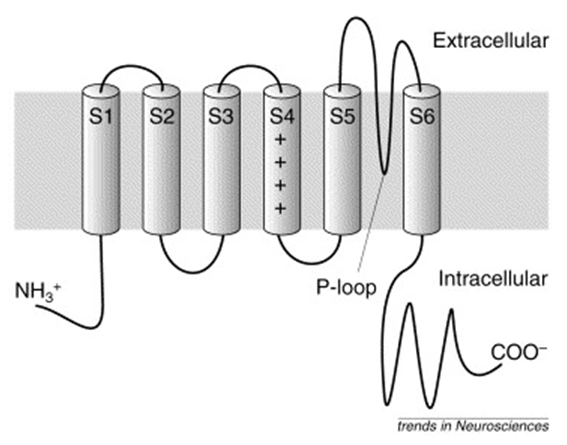- Home
-
Screening
- Ionic Screening Service
-
Ionic Screening Panel
- Ligand Gated Ion Channels
- Glycine Receptors
- 5-HT Receptors3
- Nicotinic Acetylcholine Receptors
- Ionotropic Glutamate-gated Receptors
- GABAa Receptors
- Cystic Fibrosis Transmembrane Conductance Regulators (CFTR)
- ATP gated P2X Channels
- Voltage-Gated Ion Channels
- Calcium Channels
- Chloride Channels
- Potassium Channels
- Sodium Channels
- ASICs
- TRP Channels
- Other Ion Channels
- Stable Cell Lines
- Cardiology
- Neurology
- Ophthalmology
-
Platform
-
Experiment Systems
- Xenopus Oocyte Screening Model
- Acute Isolated Cardiomyocytes
- Acute Dissociated Neurons
- Primary Cultured Neurons
- Cultured Neuronal Cell Lines
- iPSC-derived Cardiomyocytes/Neurons
- Acute/Cultured Organotypic Brain Slices
- Oxygen Glucose Deprivation Model
- 3D Cell Culture
- iPSC-derived Neurons
- Isolation and culture of neural stem/progenitor cells
- Animal Models
- Techinques
- Resource
- Equipment
-
Experiment Systems
- Order
- Careers
- Home
- Symbol Search
| Catalog | Product Name | Gene Name | Species | Morphology | Price |
|---|---|---|---|---|---|
| ACC-RI0145 | Human KCNQ2/KCNQ3 Stable Cell Line-HEK293 | KCNQ3 | Human | Epithelial | INQUIRY |
KCNQ3 gene belongs to a large family of genes that provide instructions for potassium channel protein synthesis. These channels transport positively charged potassium ions into and out of the cell, and play a key role in the cell's ability to generate and transmit electrical signals. Studies have found that the specific function of potassium ion channels depends on the constituent protein components and their location in the body. Channels made of KCNQ3 protein are active in nerve cells in the brain, where they transport potassium ions out of the cell. These channels are a kind of potassium conductance that slowly activates and inactivates, and play a key role in determining the subthreshold electrical excitability of neurons and their responsiveness to synaptic input. M current was first described in peripheral sympathetic neurons, and the differential expression of this conductance resulted in sympathetic neuron subtypes with different firing patterns. The M current ensures that the neurons are not always active, or that they are easily excited. Potassium channels are composed of several proteins (subunits). Each channel contains four alpha subunits, which form pores through which potassium ions pass. The four alpha subunits from the KCNQ3 gene can form a channel. However, the α subunit of KCNQ3 can also interact with the α subunit of the KCNQ2 gene to form functional potassium channels, which deliver stronger M currents.

Figure 1. The structure of KCNQ3 Protein.(Cooper, E. C., et al.; 2000)
The researchers searched the EST database using the full-length cDNA of KCNQ2 and identified KCNQ3 as a member of the voltage-gated potassium channel family. By screening the human fetal brain cDNA library, a full-length cDNA corresponding to the KCNQ3 gene was identified. Further research found that cDNA encodes a 854 amino acid protein with structural features related to KCNQ1. Northern blot analysis revealed that a 10.5 kb KCNQ3 mRNA transcript is restricted in expression in the brain, including the cerebral cortex, hippocampus, caudate nucleus, amygdala and thalamus.
KCNQ3 Function and Adjustment
Through further research, it was found that phosphatidylinositol (4,5)-bisphosphate (PIP2) activates all members of the KCNQ channel family analyzed, including human KCNQ2 and heterodimers of human KCNQ2 and rat KCNQ3. The mutations from his328 to cys in KCNQ2 and his330 to cys in Kcnq3 reduce or eliminate PIP2-mediated channel activation. Wortmannin is a pharmacological inhibitor of PIP2 regeneration. It slows down the recovery of PIP2 hydrolysis and reduces the sensitivity of the KCNQ2/Kcnq3 channel to PIP2, thereby reducing the M current. Therefore, it can be proved that PIP2 acts as the second messenger of membrane diffusion to regulate the activity of KCNQ current.
KCNQ3 and Disease
Benign Familial Neonatal Seizures
KCNQ3 gene mutations have been found in some patients with benign familial neonatal seizures (BFNS). BFNS is characterized by recurrent neonatal seizures. Seizures start on the 3rd day of life and usually disappear within 1 to 4 months. In this case, at least three mutations have been identified, and these mutations change a single amino acid sequence in the KCNQ3 protein. Due to these sudden changes, the M current decreases. Researchers believe that a 25% reduction in current is enough to cause BFNS. Decreased M currents can cause neurons to become over-excited, which is believed to be the cause of seizures. It is unclear why epilepsy stopped at 4 months of age. Studies have shown that the potassium channels formed by KCNQ2 and KCNQ3 proteins play an important role in preventing the overexcitement of neonatal neurons, but there are other mechanisms in infancy.
References
- Chung HJ, et al.; Polarized axonal surface expression of neuronal KCNQ channels is mediated by multiple signals in the KCNQ2 and KCNQ3 C-terminal domains. Proc Natl Acad Sci USA. 2006, 103(23):8870-5.
- Rogawski MA. KCNQ2/KCNQ3 K+ channels and the molecular pathogenesis of epilepsy: implications for therapy. Trends Neurosci. 2000, 23(9):393-8.
- Schroeder BC, et al.; Moderate loss of function of cyclic-AMP-modulated KCNQ2/KCNQ3 K+ channels causes epilepsy. Nature. 1998, 396(6712):687-90.
- Singh NA, et al.; KCNQ2 and KCNQ3 potassium channel genes in benign familial neonatal convulsions: expansion of the functional and mutation spectrum. Brain. 2003, 126(Pt 12):2726-37.
- Charlier, C., et al.; A pore mutation in a novel KQT-like potassium channel gene in an idiopathic epilepsy family. Nature Genet. 1998, 18: 53-55.
- Cooper, E. C., et al.; Colocalization and coassembly of two human brain M-type potassium channel subunits that are mutated in epilepsy. Proc. Nat. Acad. Sci. 2000, 97: 4914-4919.
- Fister, P., et al.; Benign familial neonatal convulsions caused by mutation in KCNQ3, exon 6: a European case. Europ. J. Paediat. Neurol. 2013, 17: 308-310.
- Michael A Rogawski, et al.; KCNQ2/KCNQ3 K+ channels and the molecular pathogenesis of epilepsy: implications for therapy. Trends in Neurosciences. 2000, 23(9): 393-398.
Inquiry
